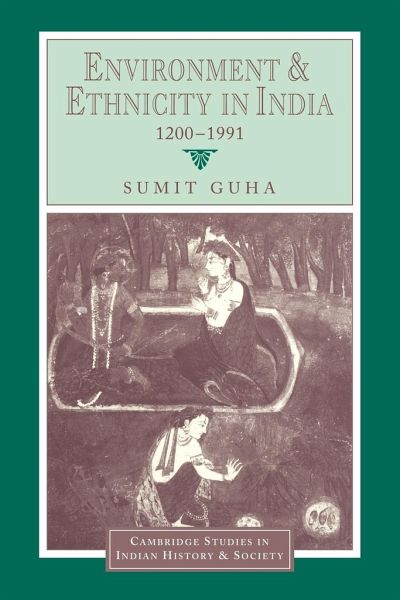
Environment and Ethnicity in India, 1200 1991

PAYBACK Punkte
29 °P sammeln!
An analysis of environment and ethnicity through the history of forest communities in western India.Drawing on a rich collection of sources, Sumit Guha's book reconstructs the history of the forest communities in western India to explore questions of tribal identity and the environment. In so doing, he demonstrates how the ideology of indigenous cultures, developed out of the notion of a pure and untouched ethnicity, is in fact rooted in nineteenth-century racial and colonial anthropology. As a challenge to this view, the author traces the processes by which the apparently immutable identities...
An analysis of environment and ethnicity through the history of forest communities in western India.
Drawing on a rich collection of sources, Sumit Guha's book reconstructs the history of the forest communities in western India to explore questions of tribal identity and the environment. In so doing, he demonstrates how the ideology of indigenous cultures, developed out of the notion of a pure and untouched ethnicity, is in fact rooted in nineteenth-century racial and colonial anthropology. As a challenge to this view, the author traces the processes by which the apparently immutable identities of South Asian populations took shape, and how these populations interacted politically, economically and socially with civilizations outside their immediate vicinity. While such theories have been discussed by scholars of South-East Asia and Africa, this study examines the South Asian case. Sumit Guha's penetrating and controversial critique will make a significant contribution to that literature.
Review quote:
"...a significant contribution to knowledge of a heretofore thinly researched aspect of South Asian history and development."
Choice
"...this book is a major contribution to the historiography of South Asia."
The Historian
Table of contents:
'Rama, Sita and Lukshmana in the forest'; List of maps; List of tables; Acknowledgements; Glossary; List of abbreviations; Introduction; 1. From the archaeology of mind to the archaeology of matter; 2. Subsistence and predation at the margins of cultivation; 3. State formation in the highland forests, 1350-1800; 4. The peoples of the Sahyadri under Marathas and British; 5. The central Indian forest from Mughal suzerainty to British control; 6. The central Indian forest under early British rule; 7. Identity and aspiration: not noble savage but savage noble; 8. The high colonial period and after: new patterns of authority and power; 9. From sanctuaries to safeguards: policies and politics in twentieth-century India; Conclusion; Afterword; Bibliography; Index.
Drawing on a rich collection of sources, Sumit Guha's book reconstructs the history of the forest communities in western India to explore questions of tribal identity and the environment. In so doing, he demonstrates how the ideology of indigenous cultures, developed out of the notion of a pure and untouched ethnicity, is in fact rooted in nineteenth-century racial and colonial anthropology. As a challenge to this view, the author traces the processes by which the apparently immutable identities of South Asian populations took shape, and how these populations interacted politically, economically and socially with civilizations outside their immediate vicinity. While such theories have been discussed by scholars of South-East Asia and Africa, this study examines the South Asian case. Sumit Guha's penetrating and controversial critique will make a significant contribution to that literature.
Review quote:
"...a significant contribution to knowledge of a heretofore thinly researched aspect of South Asian history and development."
Choice
"...this book is a major contribution to the historiography of South Asia."
The Historian
Table of contents:
'Rama, Sita and Lukshmana in the forest'; List of maps; List of tables; Acknowledgements; Glossary; List of abbreviations; Introduction; 1. From the archaeology of mind to the archaeology of matter; 2. Subsistence and predation at the margins of cultivation; 3. State formation in the highland forests, 1350-1800; 4. The peoples of the Sahyadri under Marathas and British; 5. The central Indian forest from Mughal suzerainty to British control; 6. The central Indian forest under early British rule; 7. Identity and aspiration: not noble savage but savage noble; 8. The high colonial period and after: new patterns of authority and power; 9. From sanctuaries to safeguards: policies and politics in twentieth-century India; Conclusion; Afterword; Bibliography; Index.














